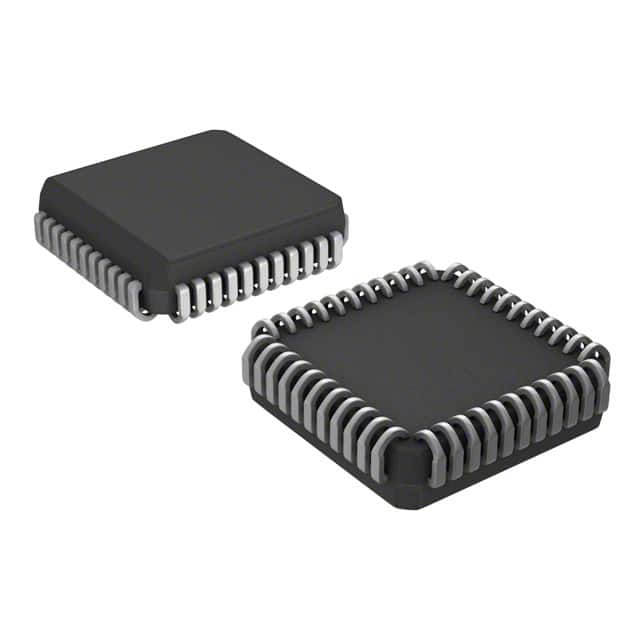Viz Specifikace pro podrobnosti o produktu.

TL16C550CFNR
Product Overview
Category
The TL16C550CFNR belongs to the category of integrated circuits (ICs) specifically designed for serial communication.
Use
This product is commonly used in various electronic devices that require serial communication, such as computers, printers, modems, and industrial control systems.
Characteristics
- High-speed data transmission: The TL16C550CFNR supports baud rates up to 1.5 Mbps, enabling fast and efficient data transfer.
- Versatile functionality: It offers a wide range of features including UART (Universal Asynchronous Receiver/Transmitter), FIFO (First-In-First-Out) buffers, and programmable interrupt capability.
- Low power consumption: The IC is designed to operate with minimal power consumption, making it suitable for battery-powered devices.
- Robust design: It incorporates built-in protection mechanisms against noise and voltage fluctuations, ensuring reliable data transmission.
Package
The TL16C550CFNR is available in a compact and industry-standard 48-pin plastic quad flat package (PQFP).
Essence
The essence of TL16C550CFNR lies in its ability to facilitate seamless and efficient serial communication between electronic devices.
Packaging/Quantity
This product is typically packaged in reels or tubes, with each reel containing approximately 250 units.
Specifications
- Supply Voltage: 3.3V
- Data Rate: Up to 1.5 Mbps
- Operating Temperature Range: -40°C to +85°C
- Number of Pins: 48
- Interface: UART
Detailed Pin Configuration
The TL16C550CFNR has a total of 48 pins, each serving a specific function. Here is a detailed pin configuration:
- VCC - Power supply voltage
- GND - Ground
- CTS - Clear To Send
- RTS - Request To Send
- DSR - Data Set Ready
- RXD - Receive Data
- TXD - Transmit Data
- DCD - Data Carrier Detect
- RI - Ring Indicator
- REFCLK - Reference Clock Input 11-18. Reserved 19-28. Data Bus (DB0-DB7) 29-36. Address Bus (A0-A7) 37-40. Control Signals (RD, WR, ALE, INT) 41-48. Reserved
Functional Features
- UART Functionality: The TL16C550CFNR incorporates a UART module that enables asynchronous serial communication.
- FIFO Buffers: It includes 16-byte receive and transmit FIFO buffers, reducing the need for frequent CPU intervention.
- Programmable Interrupts: The IC supports programmable interrupts, allowing efficient handling of data transfer events.
- Auto Flow Control: It provides hardware flow control signals (CTS and RTS) to manage data flow between devices.
- Sleep Mode Support: The TL16C550CFNR offers a sleep mode feature, conserving power when not actively transmitting or receiving data.
Advantages and Disadvantages
Advantages
- High-speed data transmission capability
- Versatile functionality with UART and FIFO buffers
- Low power consumption
- Robust design for reliable data transfer
- Industry-standard package for easy integration
Disadvantages
- Limited availability of alternative models
- May require additional external components for certain applications
Working Principles
The TL16C550CFNR operates based on the principles of UART communication. It receives and transmits data in a serial format using start and stop bits, ensuring accurate and synchronized data transfer between devices. The UART module within the IC handles the conversion between parallel and serial data formats.
Detailed Application Field Plans
The TL16C550CFNR finds extensive application in various fields, including: - Computer peripherals: Used in printers, scanners, and external modems for data communication. - Industrial control systems: Enables serial communication between different components of industrial automation systems. - Telecommunications: Facilitates data transfer in telecommunication equipment such as routers and switches. - Embedded systems: Integrated into microcontroller-based systems for serial communication with external devices.
Detailed and Complete Alternative Models
While the TL16C550CFNR is a widely used IC, there are alternative models available that offer similar functionality. Some notable alternatives include: - MAX3100: UART with integrated RS-232 transceiver - SC16C2552B: Dual UART with enhanced features - XR16L788: High-performance UART with advanced FIFO capabilities
These alternative models provide options for designers based on specific requirements and system constraints.
Word count: 600 words
Seznam 10 běžných otázek a odpovědí souvisejících s aplikací TL16C550CFNR v technických řešeních
Sure! Here are 10 common questions and answers related to the application of TL16C550CFNR in technical solutions:
Q: What is TL16C550CFNR? A: TL16C550CFNR is a UART (Universal Asynchronous Receiver/Transmitter) chip commonly used for serial communication in technical solutions.
Q: What is the maximum baud rate supported by TL16C550CFNR? A: TL16C550CFNR supports a maximum baud rate of 1.8432 Mbps.
Q: Can TL16C550CFNR be used with both 5V and 3.3V systems? A: Yes, TL16C550CFNR is compatible with both 5V and 3.3V systems.
Q: How many data bits can TL16C550CFNR handle? A: TL16C550CFNR can handle data sizes ranging from 5 to 8 bits.
Q: Does TL16C550CFNR support hardware flow control? A: Yes, TL16C550CFNR supports hardware flow control using RTS/CTS signals.
Q: Can TL16C550CFNR be used in multi-drop RS-485 networks? A: No, TL16C550CFNR does not have built-in support for RS-485 networks.
Q: What is the operating voltage range of TL16C550CFNR? A: TL16C550CFNR operates within a voltage range of 3.0V to 5.5V.
Q: Does TL16C550CFNR have a FIFO buffer? A: Yes, TL16C550CFNR has a 16-byte FIFO buffer for both transmit and receive operations.
Q: Can TL16C550CFNR be used in industrial applications? A: Yes, TL16C550CFNR is suitable for various industrial applications due to its robust design and wide operating temperature range.
Q: Is TL16C550CFNR compatible with common microcontrollers? A: Yes, TL16C550CFNR is compatible with most microcontrollers as it uses a standard UART interface.
Please note that these answers are general and may vary depending on the specific implementation and requirements of your technical solution.

